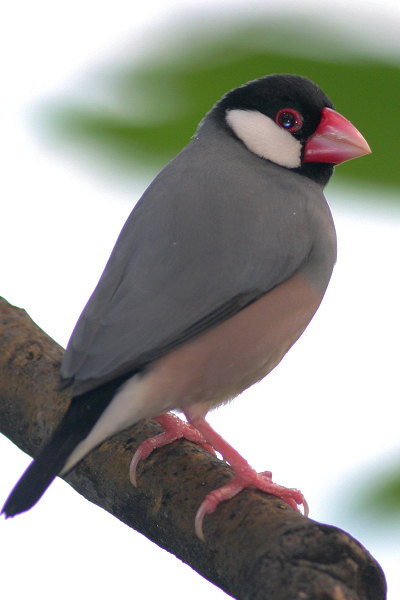
Finally, possible competition with the tree sparrow ( Passer montanus), a recent arrival within the range of the Java sparrow, and habitat loss, caused by the invasion of alang-alang grass ( Imperata cylindrical), may be contributing to the decline of the Java sparrow (4).

It is sometimes considered a rice crop-pest and sparrows on rice fields have been heavily persecuted, with adult birds being shot and nests being destroyed. Common Name: Java Sparrow, Java Finch Latin Name: Lonchura Oryzivora Average Lifespan: 12 Years Average Length: 5+ Inches Average Weight: 20 grams Song. As the Java sparrow is frequently associated with agricultural land, it is therefore very susceptible to changes in agricultural practices. The excessive use of pesticides in rice fields in the 1960s may play a greater role in the population declines than is currently known. In addition to trapping, a number of other threats may hold some responsibility for this species' decline. Unfortunately, the gregarious, flocking nature of the Java sparrow makes it an easy target for bird catchers (4). Ironically, even in other areas of Southeast Asia where the Java sparrow was introduced as a result of cage bird escapes, numbers are now decreasing due to further trapping (7). This has been primarily attributed to exploitation for the domestic and international cage-bird trade, which has been occurring for possibly hundreds of years (4). Within its native range, where it was once widespread and abundant, populations of the Java sparrow have suffered disastrous declines. Distinctive: a mostly-gray finch with a dull-cinnamon belly, an outsized, puffin-like, rosy bill, and bulging white cheek-patches on an otherwise black head. Generally, clutches of three or four eggs are laid into these nests, although larger clutches have also been found (4). The nest is a loosely built structure of dried grass, constructed under the roofs and eaves of buildings in towns and villages, or in bushes and treetops in more rural areas. Within the natural range of the Java sparrow, breeding extends from February to August, with a peak in April and May. However, like other members of the finch family (the Estrildidae), the Java sparrow also feeds on the small seeds of grasses and flowering plants, and occasionally insects (4) (6). In its natural range of Java and Bali, the vast extent of rice-farming has resulted in rice being the dominant food in the Java sparrow's diet so much so that the scientific species name oryzivora means 'rice-eater' (4). They roost communally in tall trees, cultivated palms in towns, or shrubs, reeds or sugarcane in the country.

The gregarious Java sparrow has been observed in flocks consisting of hundreds of individuals.


 0 kommentar(er)
0 kommentar(er)
